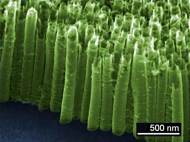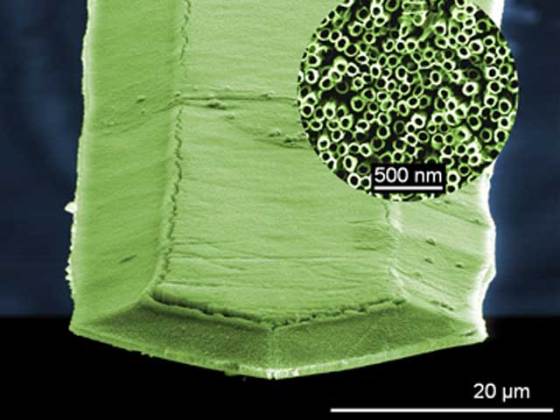Silkmoth antenna biomimicry for better explosive detectors
 A cooperation between researchers from the ISL:Research for Security and Defence with the University of Strasbourg resulted with development of a molecule detection system inspired by silkmoth antennas. The system is able to detect explosives with one thousand-fold of the detection limit attainable by currently used methods, and it could eventually be used to detect drugs, toxic agents and traces of organic pollutants.
A cooperation between researchers from the ISL:Research for Security and Defence with the University of Strasbourg resulted with development of a molecule detection system inspired by silkmoth antennas. The system is able to detect explosives with one thousand-fold of the detection limit attainable by currently used methods, and it could eventually be used to detect drugs, toxic agents and traces of organic pollutants.
The efficient detection of explosives such as trinitrotoluene (TNT) represents a difficult challenge in terms of security, since these compounds have very low volatility and it takes extremely sensitive sensors to detect them at a distance. Current systems detect concentrations of around 1 ppb (1 molecule per 109 molecules of air), but this level of performance is usually insufficient in public safety scenarios.
However, there are numerous examples of nature’s solutions where animals have a sense of smell that can surpass mentioned sensibility. Collaborating in the France’s Centre National de la Recherche Scientifique (CNRS or National Center for Scientific Research), the researchers decided to mimic the silkmoth (Bombyx mori). Its antennas are composed of roughly 1 millimeter long strands which bear a large of number of sensilla – micrometric sized organs directly connected to the sensory neurons. Since sensilla are able to detect just a few pheromone molecules, the researchers sought this as an opportunity to mimic their structure.
They came up with a system which comprises a 200-micron long and 30-micron wide silicon micro-cantilever which is covered with around 500,000 vertically aligned titanium dioxide nanotubes. The role of these nanostructures is to increase the chances where an investigated molecule is captured by increasing the surface area of the microcantilever.
By making the microcantilever vibrate, it is possible to determine whether the ambient air contains traces of TNT and if these molecules have been captured by the device. In fact, the microcantilever has a particular resonance frequency that is modified in a specific manner when it absorbs molecules of explosive.
To test the performance of this device, the researchers released very small quantities of TNT in a controlled manner. In this way, they were able to establish that the sensitivity of the device was 800 ppq (800 molecules of explosive per 1015 molecules of air). No current device is able to detect such low concentrations of explosives, and it brings the results closer to those achieved by trained detection dogs.
CNRS researchers claim that there is still a lot of research and development work to be done before their system becomes commercially available. They plan to design a device capable of specifically recognizing the type of explosive absorbed, and they think it is possible to adapt the system to detect other types of explosives, such as pentrite.
The method could also be used to detect various drugs which, like explosives, have very low volatility. In environmental terms, this bio-inspired device could make it possible to measure infinitesimal traces of pollutants such as volatile organic compounds, which have become a major health issue.
For more information, read the paper published in the journal Angewandte Chemie: “Bio-Inspired Nanostructured Sensor for the Detection of Ultralow Concentrations of Explosives”.










Leave your response!